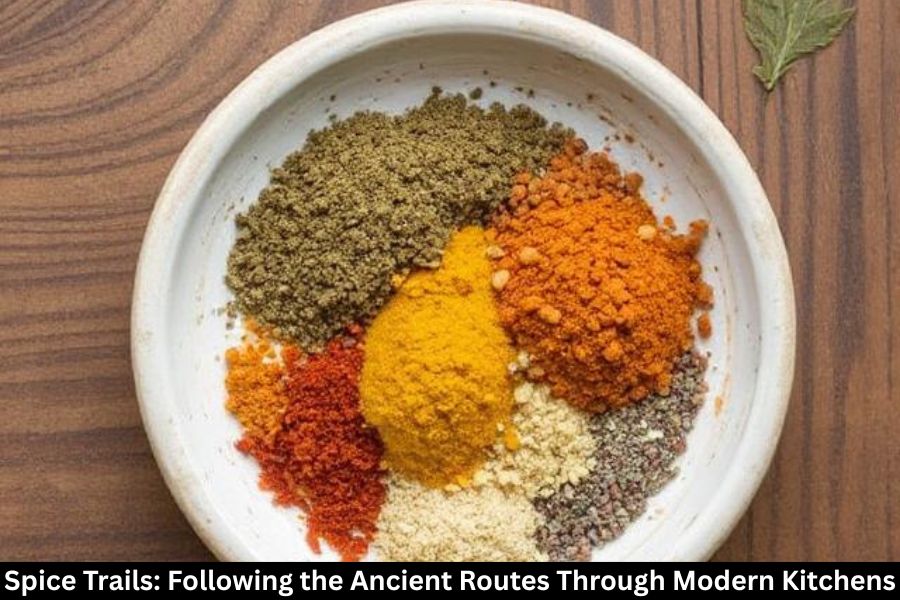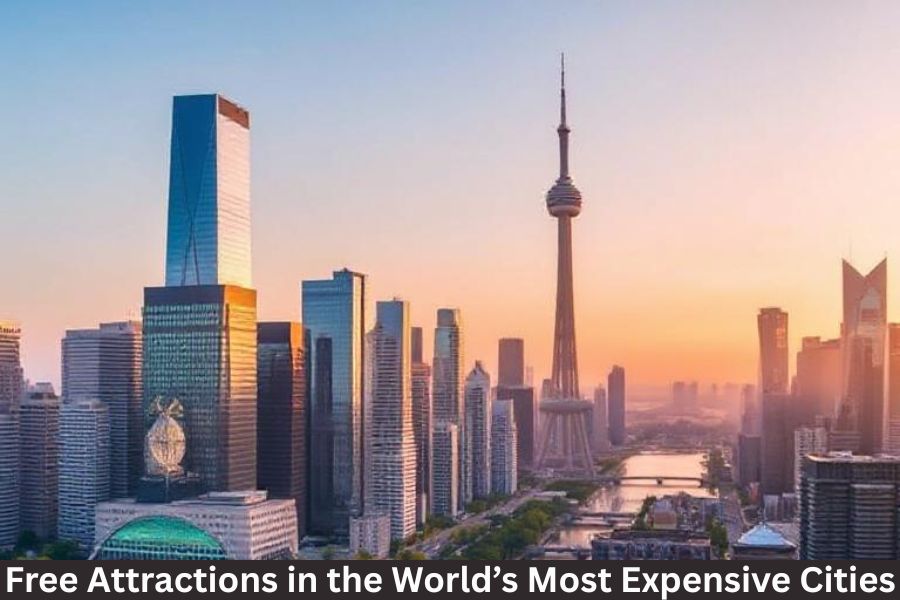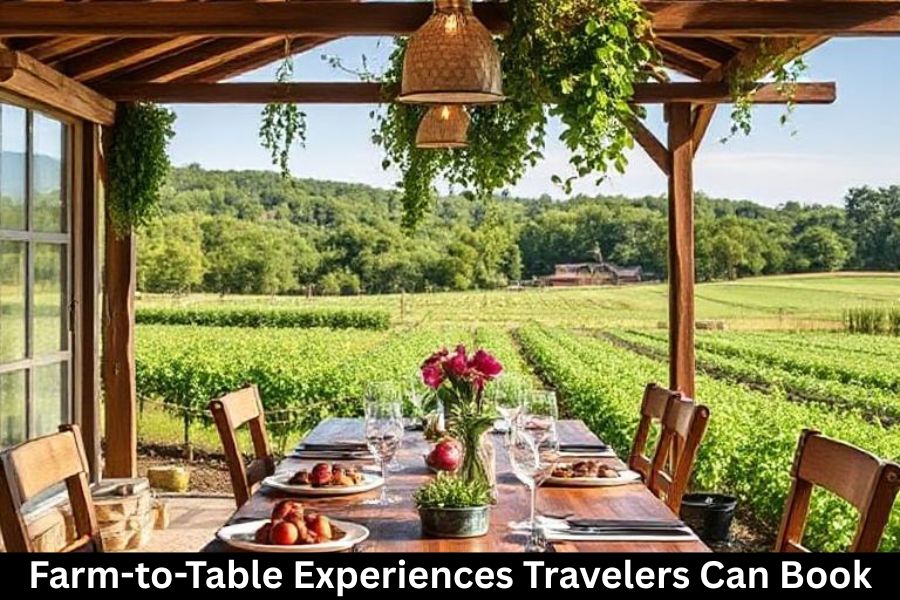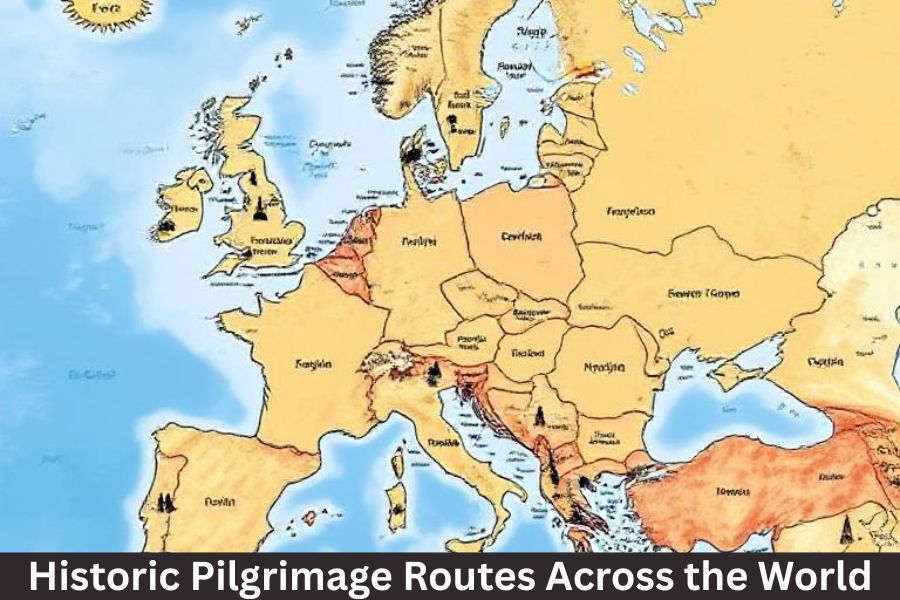Imagine a time when a pinch of black pepper could buy you a day’s wage. Spices weren’t just food enhancers—they were power, currency, and global influencers. This is the story of the spice trails, a web of ancient routes that shaped our world and still flavor our kitchens today.
The Origins of the Spice Trade
Long before airplanes and shipping containers, spices like cinnamon, cardamom, and cloves traveled thousands of miles across deserts and oceans. From India to Arabia, China to Africa—spices moved with caravans and fleets, enriching every stop along the way.
Why Spices Were Worth Their Weight in Gold
In medieval Europe, spices were status symbols. A few ounces of nutmeg could fund a ship. These tiny, aromatic treasures were prized for their flavor, their medicinal properties, and their mythical allure.
Major Ancient Spice Routes
The Maritime Silk Road
Ships braved monsoons and pirates to move spices from Southeast Asia to ports in India, the Middle East, and beyond.
The Land-Based Spice Road
Camel caravans crossed the Arabian deserts, connecting Indian spice markets with Persian, Egyptian, and eventually European cities.
European Trade and Colonial Influence
The Portuguese, Dutch, and British vied for control of spice-rich lands. Colonization often started with a clove or peppercorn and ended in empires.
Key Spices That Traveled the Globe
Cinnamon from Sri Lanka
Highly fragrant and sweet, cinnamon was one of the first spices to travel from Asia to Europe.
Pepper from India
Black gold, as it was known, originated in Kerala and was once locked in European vaults.
Cloves and Nutmeg from the Moluccas
The tiny islands of Indonesia—also called the Spice Islands—were the only place on Earth where these spices grew.
Saffron from Persia
Delicate threads plucked from crocus flowers, saffron colored and flavored dishes from Spain to South Asia.
Cultural Exchange Through Spices
How Spices Influenced Cuisines
Spices didn’t just travel; they transformed. Indian garam masala, Chinese five spice, Moroccan ras el hanout—all owe their birth to trade.
Religion, Rituals, and Medicine
Frankincense in temples. Turmeric in weddings. Cardamom in chai. Spices became sacred, medicinal, and essential to identity.
Spices in Modern Kitchens
Global Dishes That Owe Their Roots to the Spice Trails
- Chicken tikka masala (India/UK)
- Pho (Vietnam, with Chinese influence)
- Moroccan tagine (North African + Arab spices)
Signature Spice Blends Around the World
- Garam Masala – India
- Za’atar – Middle East
- Cajun Seasoning – Southern USA
- Herbes de Provence – France
- Ras el Hanout – Morocco
Cooking with the Classics
Ancient Recipes Revived
Modern chefs are rediscovering recipes from old trade records and spice logs. Think Persian stews, Roman spiced wines, or Egyptian honey cakes.
Traditional Cooking Techniques with Modern Flair
Stone-grinding spices, roasting whole seeds, or infusing oils—these time-tested techniques are making a comeback in modern kitchens.
The Economics of Spice Today
From Treasure to Grocery Shelf
What was once traded like gold is now found in every supermarket. But the journey still matters. The way spices are sourced, processed, and transported shapes their quality and our impact on the planet.
Ethical Sourcing and Sustainable Spice Farming
From fair-trade turmeric to organic cinnamon, consumers are asking hard questions about where their spices come from—and how the farmers are treated.
The Revival of Artisanal Spice Trade
Craft Spice Blends and Small-Batch Producers
Local spice shops and online curators now offer hand-blended, ethically-sourced spices that taste wildly different from mass-market jars.
Cooking as Cultural Preservation
Every time you toast cumin or grind cloves, you keep centuries-old traditions alive. That’s powerful.
Spices as Wellness Tools
Ayurveda, Chinese Medicine, and Herbal Traditions
Spices like turmeric, ginger, and fenugreek have long been part of healing systems across Asia.
Scientific Backing in the Modern Age
Modern science is catching up—turmeric’s curcumin, for instance, is studied for its anti-inflammatory effects.
Spice Tourism and Culinary Trails
Visiting Spice Farms and Markets
Zanzibar. Kerala. Oaxaca. These aren’t just travel destinations—they’re living spice museums.
Food Tours and Cooking Classes Worldwide
From Moroccan souks to Thai cooking schools, spice-based travel is booming. You don’t just see a country—you taste it.
How to Start Your Own Spice Trail at Home
Building a Global Spice Rack
Start simple: cumin, coriander, paprika, turmeric. Then explore: sumac, ajwain, za’atar, Sichuan pepper.
Tips for Sourcing Authentic Spices
- Buy whole spices when possible
- Store them in glass jars in a cool, dark place
- Toast and grind fresh for max flavor
Conclusion
The ancient spice trails may no longer be walked by camels or crossed by wooden ships, but they’re alive in every dish we savor today. Each pinch of pepper, each dusting of cinnamon, carries stories of trade, transformation, and taste across centuries. So the next time you spice up your stew or stir your curry, remember—you’re not just cooking. You’re traveling through time.
FAQs
1. Why were spices so valuable in ancient times?
Because they were rare, hard to transport, and had multiple uses—from preserving food to medicine and rituals.
2. What’s the best way to keep spices fresh?
Store them in airtight glass jars in a dark, cool place. Whole spices last longer than ground.
3. Are modern spice blends authentic?
It depends. Mass-market blends can be bland. Look for small-batch or regional producers for real depth of flavor.
4. Can I grow spices at home?
Yes! Herbs like basil, coriander, mint, and even turmeric can be grown in home gardens or pots.
5. What’s a good starter pack for someone new to global spices?
Start with cumin, turmeric, coriander, paprika, cinnamon, and chili powder. These are versatile and used in many global dishes.



